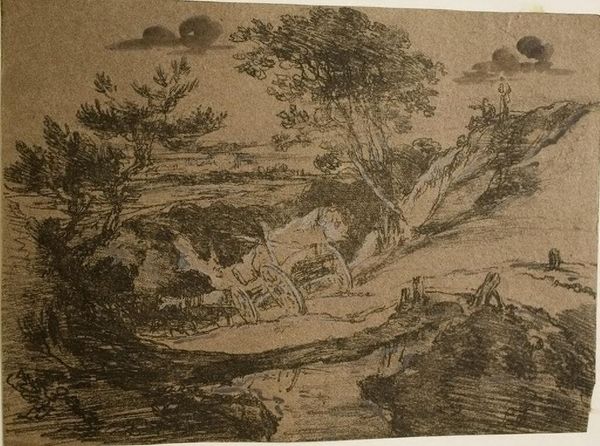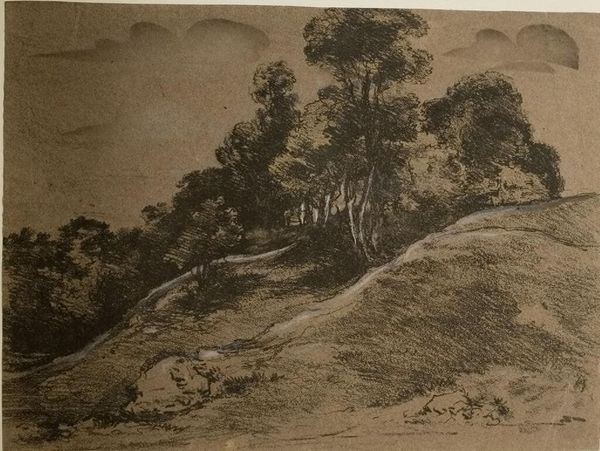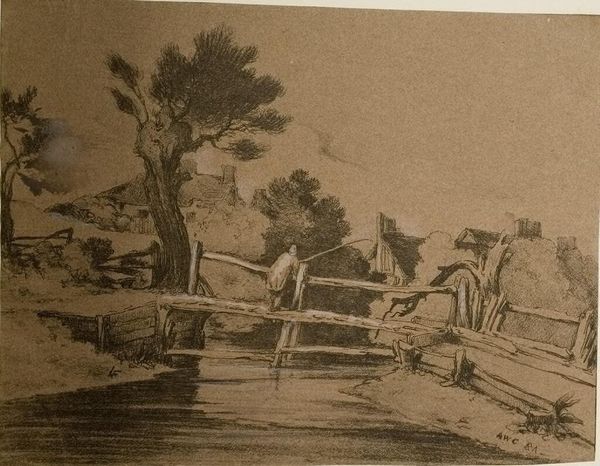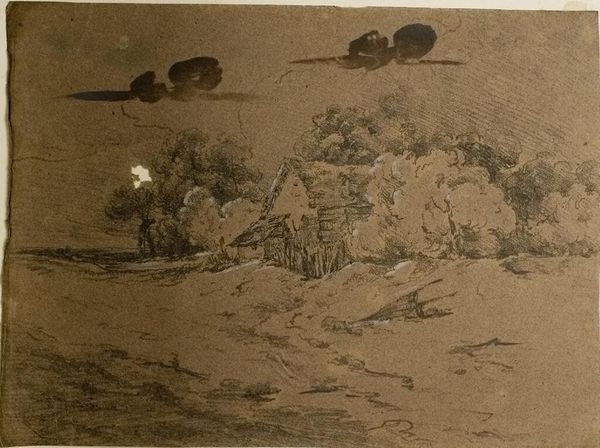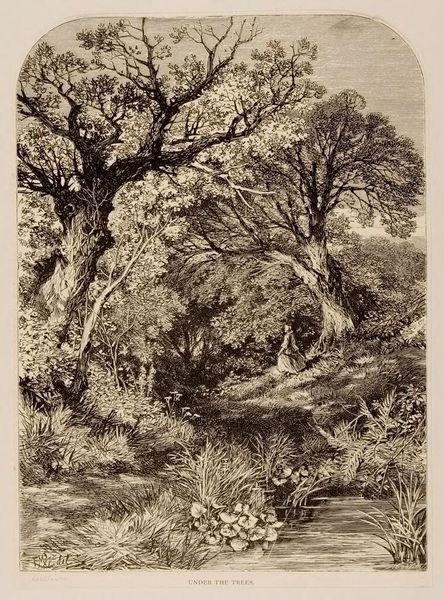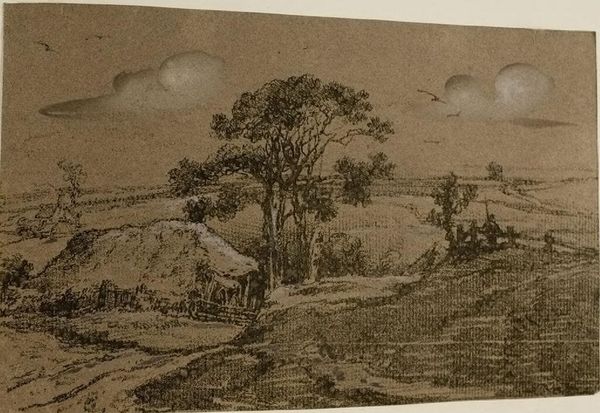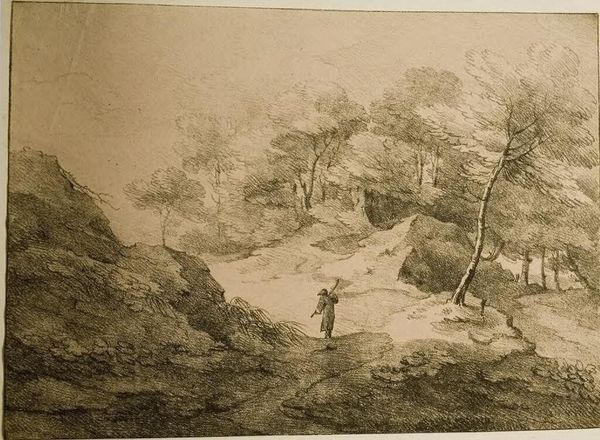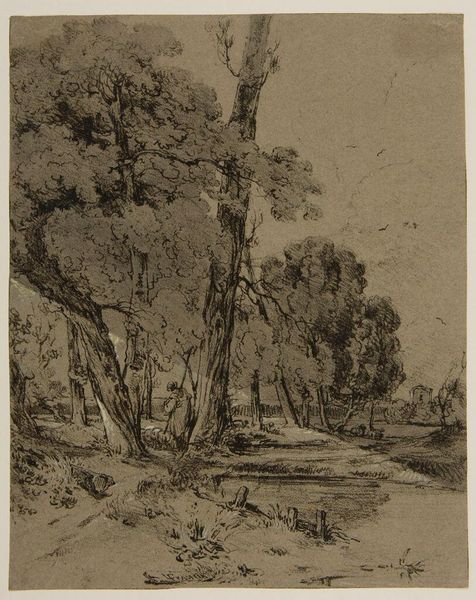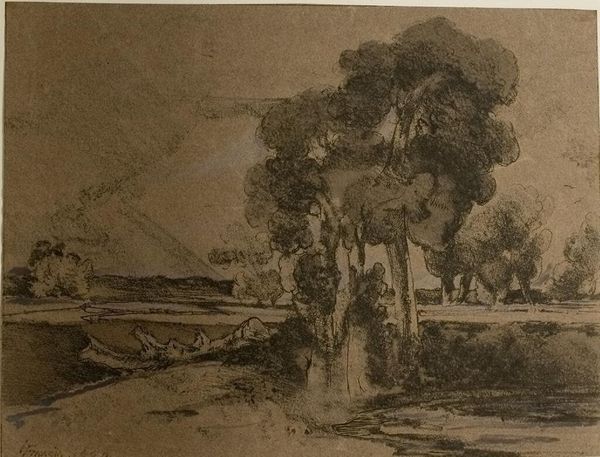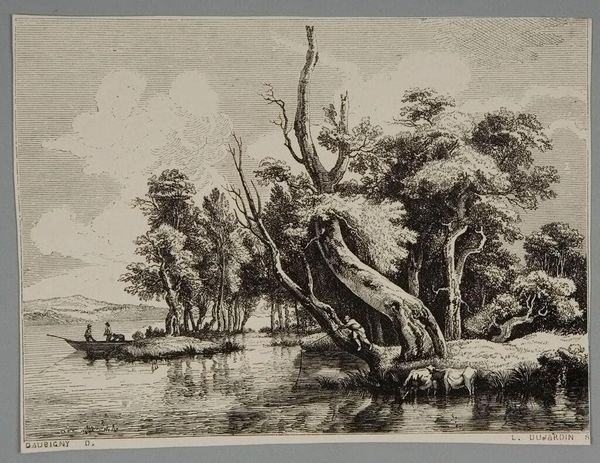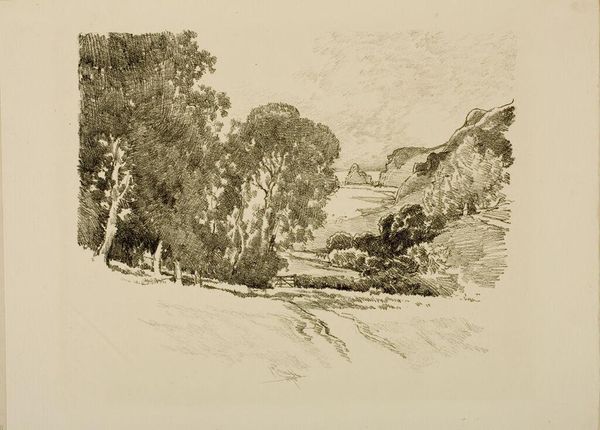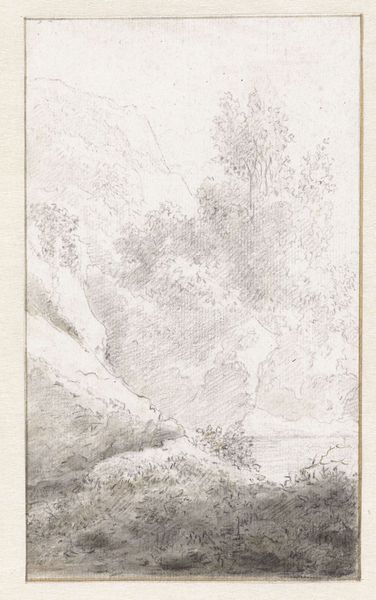
Plate Ten 1810
Copyright: CC0 1.0
Editor: Here we have François Louis Thomas Francia’s "Plate Ten", currently housed at the Harvard Art Museums. The landscape feels quite staged, almost theatrical. What social function might this kind of scene have served? Curator: Good observation. These picturesque scenes, often commissioned by the landed gentry, presented an idealized view of rural life, reinforcing their power and status. Did this impact their political power? Editor: So, the artwork's intention served a specific socio-political agenda? Is it also a way for them to romanticize nature for their own benefit? Curator: Exactly. This is how art becomes a tool, shaping perceptions and justifying social hierarchies. It’s not just about aesthetics, but about power dynamics, don't you think? Editor: Definitely. Now I can see how seemingly innocent landscapes can be interpreted as cultural statements. Curator: Precisely. Art is rarely neutral, it always reflects and reinforces existing social structures.
Comments
No comments
Be the first to comment and join the conversation on the ultimate creative platform.

